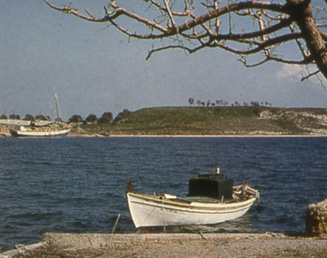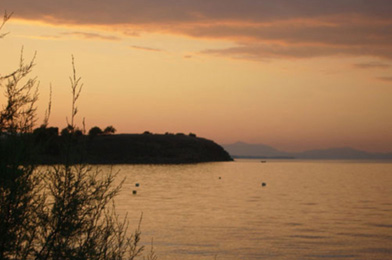
The British School of Athens began excavations at Lefkandi in 1964 under the direction of Mervyn Popham and Hugh Sackett. The site was spotted by the two archaeologists after surveying the island of Euboea to find suitable sites for excavation. The first excavations took place on the ancient settlement called Xeropolis, which is just to the east of the village on a peninsula, and revealed that the history of the site started around 2100 BC. Xeropolis became important during the Middle and Late Bronze Age, and particularly during the final stages of the Late Bronze Age, after 1200 BC.
 |
Xeropolis Then |
In 1968 at the invitation of the Greek Archaeological Service an emergency excavation started in the area of the cemeteries above what was, at that time, the main village of Lefkandi, and by the end of 1970s five burial plots had been investigated. These cemeteries and the few Early Iron Age (EIA) deposits from Xeropolis were eventually published in 1980 and 1981 in Lefkandi I.
With this publication the importance of the site became apparent to the rest of the academic community. The cemeteries cover chronologically the period from around 1050 to 825 BC, a period which before the discoveries at Lefkandi was known as the Greek Dark Age.
The next stage in the history of the research of the site was to be just as exciting and revolutionary, if not even more so, for our knowledge of early Greek history. In 1981, the Archaeological Service asked Mervyn Popham and his collaborators to excavate a building after the illegal bulldozing of its remains by the owner of the plot. This building was located to the east of the Toumba cemetery which had already revealed a number of rich burials. The discovery of the Toumba building is one of the most striking discoveries of the last thirty years in Greece: the Toumba building and its burials changed for ever our ideas of this crucial period in the history of Greece. The results of the excavations of the building are published in Lefkandi II, 1 and 2.
 |
Xeropolis
Now |
Lefkandi has entered into a new stage in the history of research in the area. The current team, by using a combination of traditional methods together with interdisciplinary approaches, aims to interpret the site and place it in its appropriate context within its region and culture.
| To Top Of Page |